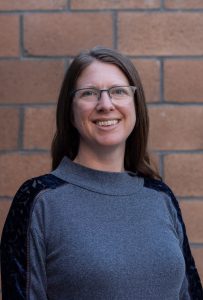


Eva Stricker is director of the Carbon Ranch Initiative for the Quivira coalition and a Research Assistant Professor at the University of New Mexico Department of Biology. One of her projects is the scientific study of compost––with the goals of helping farmers and ranchers heal and improve their land, increase their profitability, and sequester carbon. Emily Cornell, owner/manager of Sol Ranch, a cow-calf and grassfed beef operation in northeastern New Mexico, is a participant in the program, and talks about how targeted applications of compost can help larger landscapes. And Zach Withers, co-owner and operator at Polk’s Folly Farm near Albuquerque is the compost-maker; he shares his experience of restoring a highly degraded piece of land, using hogs, food waste, and wood mulch. Together they’re developing a greater understanding of how compost can be used most efficiently and effectively.
Check out this VIDEO from the project.
4’24 studying compost in the southwest
6’27 collecting food waste for hogs and compost
7’23 started out on a degraded dirt lot that had been a horse pasture
8’15 refining the compost process
9’49 Sol Ranch in a place where there was dryland farming that degraded the topsoil, so composting was a way to jumpstart the healing process
10’53 choosing smaller plots for the experiment
11’43 guarding against invasive species
13’08 snow stayed longer on the compost plots
13’33 more forbs colonizing the compost plots
13’55 cattle liked the compost plots
14’36 “we grew a lot of weeds”
15’46 finding the unexpected in science
16’17 60% more plants grew on the compost grew on the compost plots
16’48 more roots also
17’38 soil improved–more stability, greater infiltration rate
18’13 partnered with Los Alamos National Laboratory, and found that in some plots methane was being absorbed into the soil
19’07 all this points to a multiple win situation–sequestering methane, improving the soil, producing healthy animals
20’25 using compost in a targeted way
21’01 reducing erosing and slowing down water at the top of the watershed can have a literal trickle down benefit on the lower areas
21’20 need water in the system
21’57 reversing soil loss
22’18 low tech erosion control structures plus compost … applying cost benefit
23’19 treating degraded old farm fields with compost to eventually increase carrying capacity and therefore economic benefit
25’30 there’s so much degraded land in New Mexico
26’00 the plants are going to heal the soil
26’20 compost as a big sledgehammer to get the process started
26’44 once you get the microbes going, they do the work
27’18 Zach’s farm is a microcosm of the land use problems in New Mexico
28’43 studying the microbes–it’s not easy
30’13 Zach gets a huge amount of food waste for pig feed and compost
31’14 hogs are part of the process of composting, as well as wood mulch
32’45 they don’t pump ground water for compost but instead use the water from the food waste and rain/snow-fall
33’33 compost isn’t very stinky unless you’re doing it wrong
34’47 most compost in this region is produced by municipalities
35’41 creatively finding water
36’15 gray water from households
36’37 rainwater catchment for compost
37’39 better soil leads to fattier beef
38’21 low input, low equipment on Sol Ranch
39’05 leaving biomass behind
39’42 showing neighbors the importance of adding organic matter, extending the growing season
40’38 hoof impact is really important
40’50 giving and taking from the system
41’18 healthy soil principles: Maintain a living root • healthy level of disturbance • increased biodiversity
42’40 is compost on rangeland part of a bigger climate change strategy?



Subscribe:
Apple Podcasts
Spotify